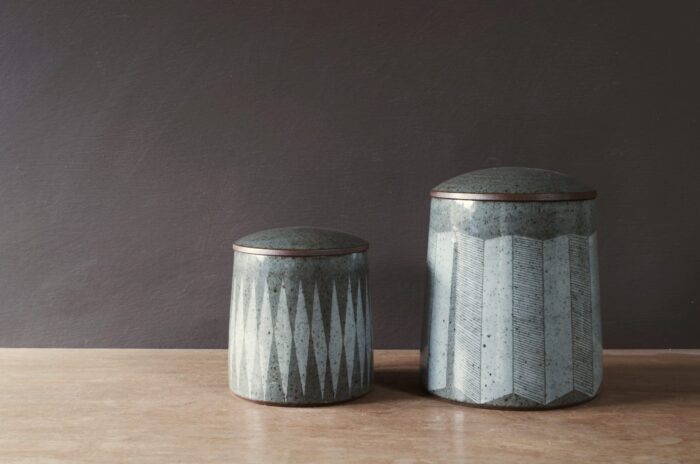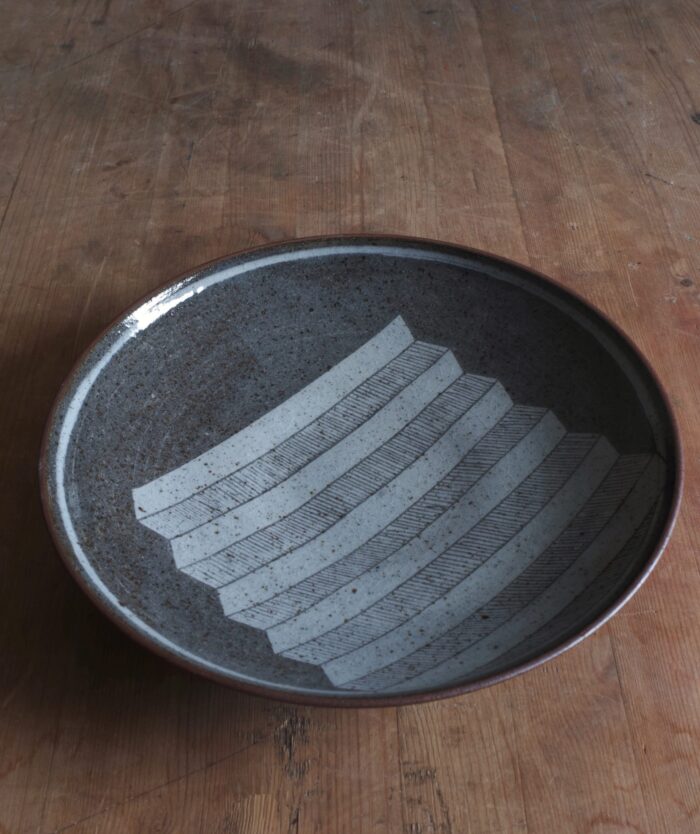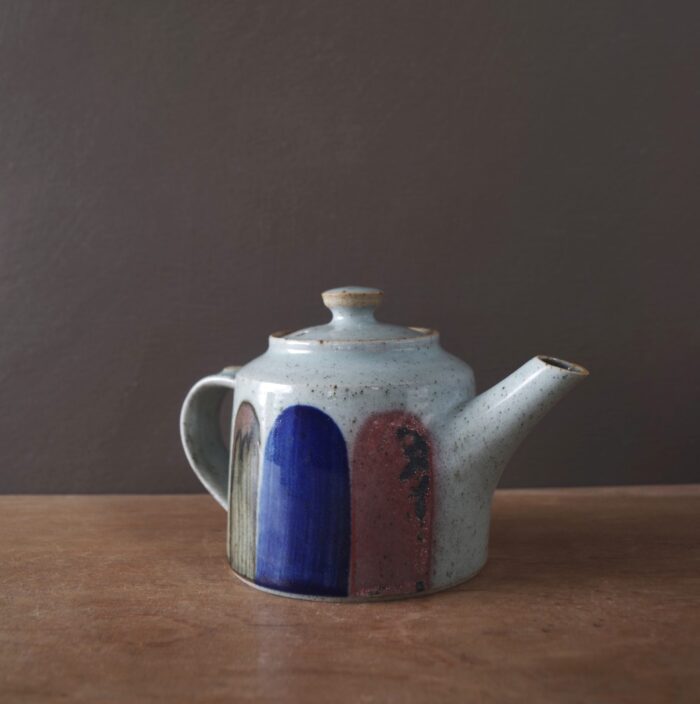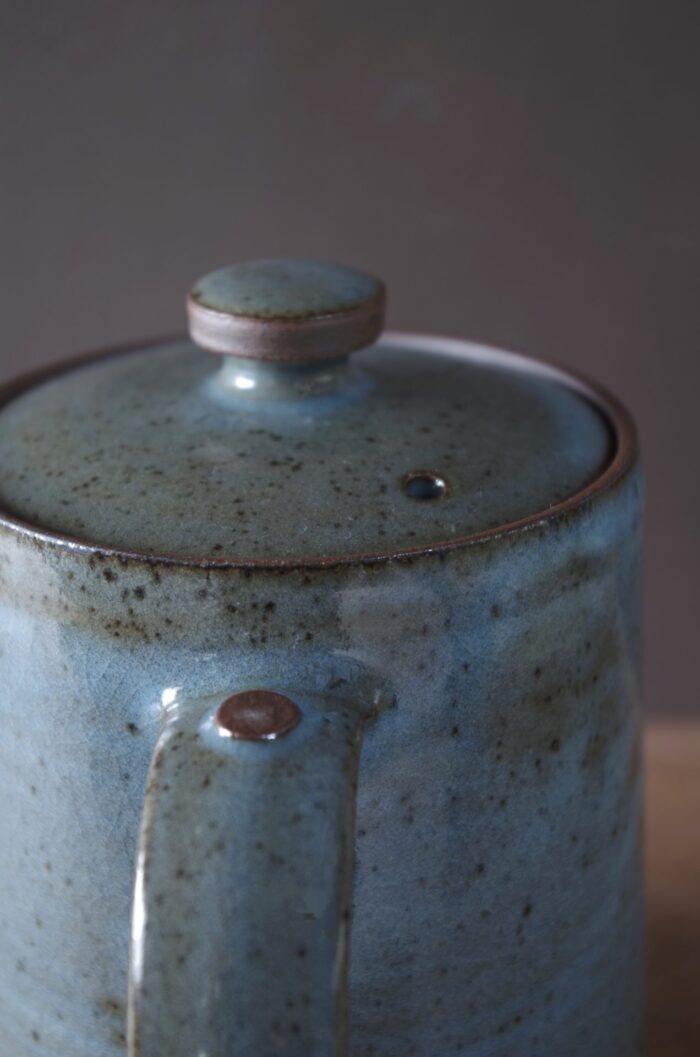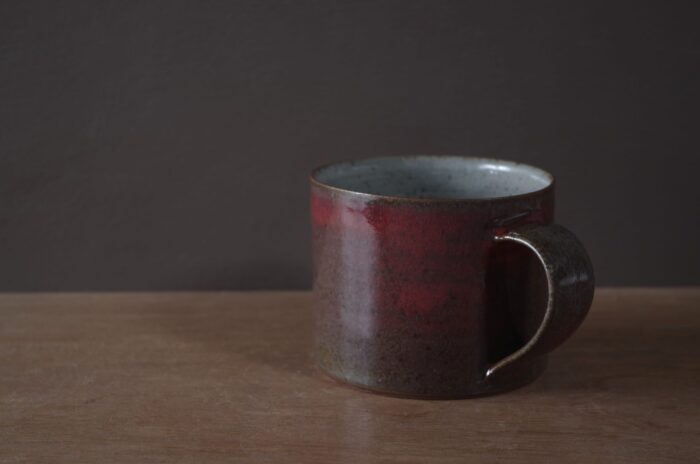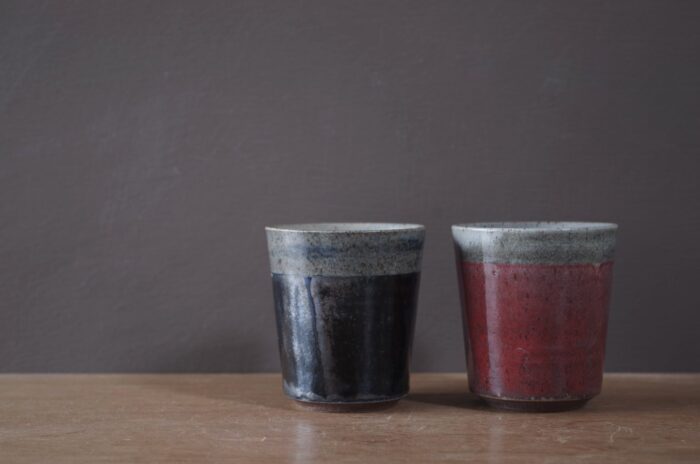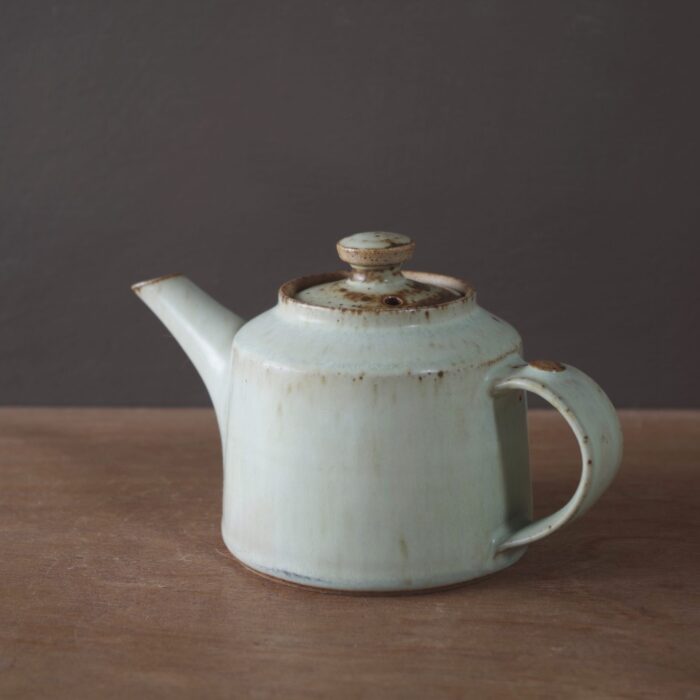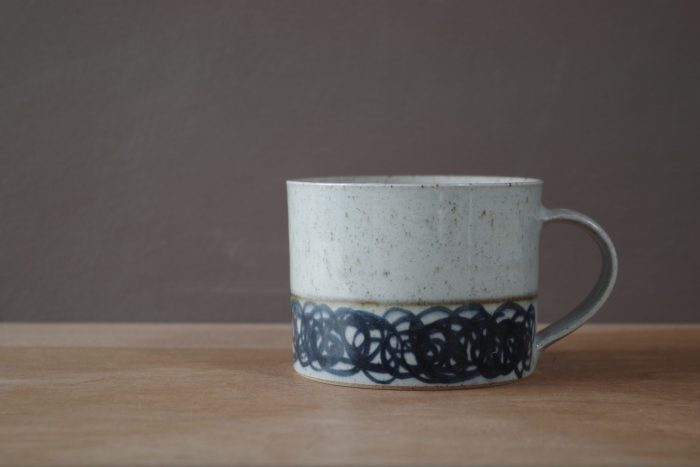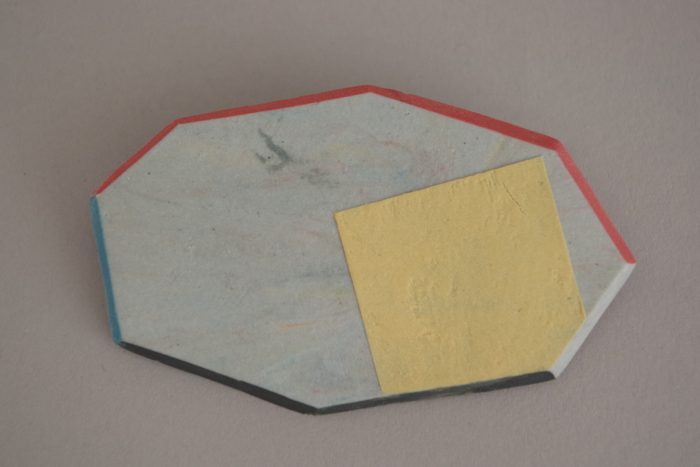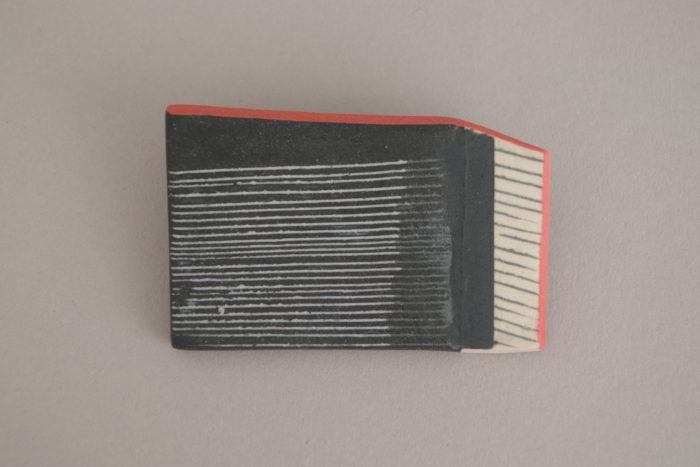Who else is currently making tableware in the UK? On Tuesday I visited Ruthin Craft Centre in North Wales, curious to see our work alongside 21 other makers, many of whom I hadn’t been aware of.
First, I must say that the Craft Centre itself is a joy to be in. It is modern, well designed, spacious and peaceful with good toilets and café. Being in a stunning rural location makes it a destination venue – I was amazed by how many cars were in the carpark on a snowy January Tuesday.
On entering the exhibition in the main gallery my excitement became tinged with anxiety. The hushed, reverential atmosphere, soft lighting, white walls and plinths gave me a kind of stage fright. I sought for reassurance in our work – which I found – it was displayed well and looking good.

Our work, with tableware by Alistair Young and Lowri Davies behind.
In my head, the exhibitors fell into two categories: the makers we know, with whom we’ve found warmth and familiarity through exhibiting alongside at events like Ceramic Art London and Origin over many years. We’ve shared highs and lows and bought eachother’s work. That era is over for us now, and I suspect irrelevant for the next category – the younger potters who’s shop front is Instagram and who need to engage their followers; to be as good at taking pictures and reels of their work as they are at making it. But that division ebbed away when I spent time with the work, saw and felt the commonality of clay and making by hand.
The different roles played by materials, expression, functionality and skill are evident in every piece, but the relationship between them and priority the maker gives them vary hugely, resulting in rich diversity.
Several makers favour tactile, matte surfaces; either by leaving the clay body unglazed (Sue Pryke, Alistair Young, Julija Pustovrh, Sasha Wardell, or through the use of matte glazes (Jono Smart, Borja Moronta) and some makers enjoy the contrast between glazed and unglazed areas (us, Pete Bodenham, Jaejun Lee, Bert Jones, Derek Wilson).

Tableware by Bert Jones

Tableware by Peter Bodenham (foreground) and Chris Keenan.
Surface decoration was joyful in the work of Irena Sibrijns and painterly – almost Fauvist – with Lowri Davies; sensitive and strong in David Stonehouse’s work.

Tableware by Borja Moronta and David Stonehouse in the background.

Tableware by Jaejun Lee and Pottery West.

Tableware by Jono Smart and Charlie Collier
I was disappointed by the “Do not Touch” signs everywhere. I can understand that the gallery have to protect against damage, but the physicality of tableware is so important to me that it felt a bit like going to a restaurant and not being allowed to eat. I did handle some of the exhibits whilst chatting with the gallery director and made some interesting discoveries: the decoration on the bases of Irena’s pots is more restrained and more lovely than on the parts you’re supposed to see… Bert Jones is an awesome thrower and his handles feel great… the semi-matte glazes of Jo Davies and Pottery West feel waxy and seductive.
It’s now several days since my trip to Ruthin and I am still not sure what to think of it. On one hand it’s wonderful that well made, handmade tableware is held up for appreciation, the breadth of approach and outcome highlighted. I found the exhibition fascinating and am delighted to be included in the selection… but the non-domestic, non-touching, gallery context cannot reveal the true comfort and beauty of a functional object, any more than images of a loved human can reveal their inner-beauty.
The exhibition is on until April 16th.



